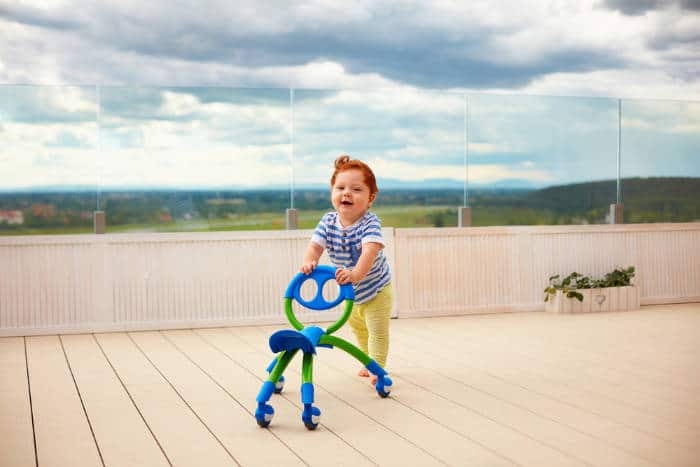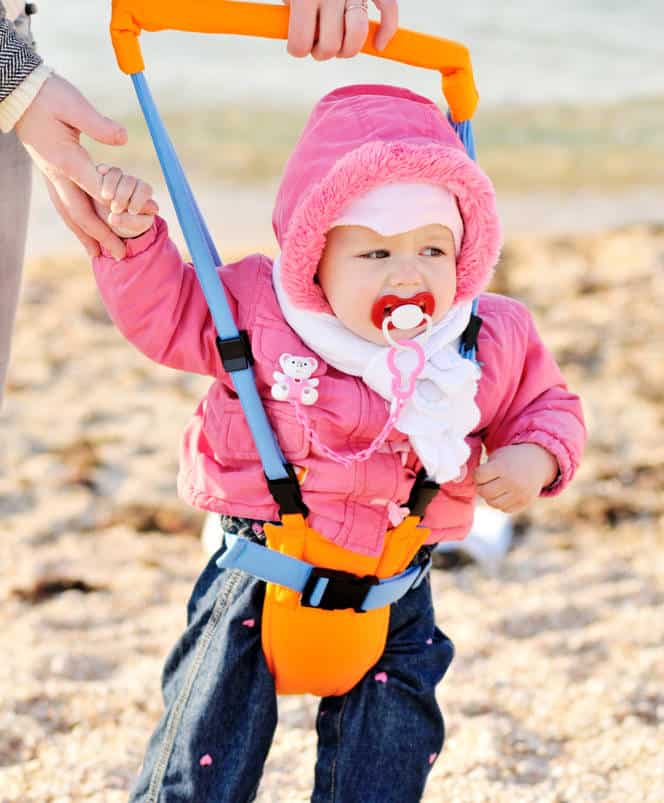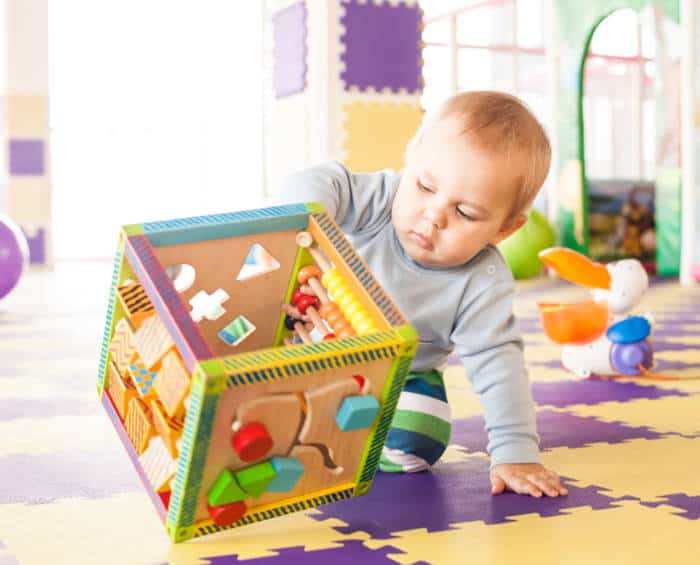Parents understand that developmental milestones are important. They’re asked about them at every well check and probably every playdate until your child is well into the elementary years. From birth, you watch for neck strength, stable head holding, pushing onto elbows, rolling, sitting, scooting, crawling, and eventually walking. You know what to watch for, but do you know why those basic building blocks are so important? Don’t worry, we’re here to tell you!
Why rolling over is important
The skill is essential because it marks the beginning of coordinated, independent movement for your baby. It makes use of every muscle and strengthens their neck and core for more complicated movements later on. In short, it’s the biggest step toward mobility since birth.
Aside from muscle strength and movement, rolling over is also important for sensory development. Vestibular and proprioceptive senses are vital to the innate understanding of where our body is in space and how it moves through space. Babies are sensory sponges and rolling over helps water that needs for sensory engagement, whether it’s internal or external stimuli.

Developmental skills needed to master rolling
The most important prerequisite to rolling over is developing proper neck strength. Babies need to be able to hold their heads steady without jerky movements. They also need to move both sides of their body. Leg and hip strength are also essential to purposeful rolling.
Exercises to improve strength
Minimize baby equipment
While bouncy seats and props are great for when you need to free up your arms for a minute or fold laundry without baby rolling away, they can impede motor skills and developmental milestones if used too often and for too long. When possible, throw down a blanket and let your baby move freely with plenty of floor time.
Lots of tummy time
Never underestimate the importance of a little time on the tummy. Even if your baby dislikes tummy time and protests with whimpers and cries, you should attempt a few minutes every day. It helps build neck strength and develops a healthy spine. The changing perspective from back to tummy is great for sensory engagement. Suddenly, the living room and their favorite toys look different and they will view their surroundings with new curiosity and interest.
Allow playtime on back
Just as tummy time is important, time on their back is also useful for developing muscle strength, coordination, and sensory awareness. Both are necessary to master rolling over. So, don’t fret if you only get a few minutes on the tummy. Flip them over and let them kick and squirm on their back. Any outlet for free movement is excellent for development.
Play on the side (use toys to motivate)
If your baby is pushing up on their elbows and inching toward rolling, let them hang out on their sides for a while. Part of the initial struggle is learning to tuck their shoulder and lean over. Letting them lie on their side while interacting with toys is a great way to practice the movement while keeping them engaged.
Encourage crossing the midline
The midline is essentially an imaginary line that runs down the middle of your infant’s body from the top of their head to between their feet. To cross the midline refers to reaching across their body. It’s important because it engages both sides of the brain and is necessary for the planning and execution of complex movements. To help your infant do this, encourage them to reach for their feet during back time. You can also hold toys for them to reach for or move toys while allowing them to follow them. Crossing the midline will continue to be an important skill as they grow and master motor skills.
Segmented roll
This is done by isolating body parts and moving them independently. For example, when your baby has gas and you bicycle their legs, you’re isolating that movement to the bottom half of their body. If you were to do a segmented roll, you could work on rolling their legs to the side while leaving their shoulders flat to the ground. Likewise, you can assist them while in tummy time by helping them tuck one shoulder under their body while their legs stay put. The isolation of these muscle groups helps your baby learn they can move arms and legs independent of their core and head. It also helps with vital trunk flexibility.
Wear baby in a carrier
So, you might be scratching your head because we already said to minimize the baby gear. However, baby carriers are slightly different. When you wear your baby, you’re encouraging neck strength as they scan the room from a different perspective. Babywearing is also great for helping your little one develop good core strength because they automatically shift and adjust as you walk and move around with the carrier. While sedentary baby gear should be kept to a minimum, this is one accessory you don’t need to shy away from.
Baby gear to make it comfortable
You don’t want to place your baby on a hardwood floor with nothing under them or stash them in the corner like a sack of potatoes. However, you don’t need to go overboard with gear to make them cushy as a waterbed. A soft blanket or pad is a splendid piece of gear. If you like, you can splurge for padding big enough to transition into crawling and sitting up. For tummy time, you can also introduce a boppy pillow under the armpits of your little one until they get the hang of balancing on their elbows. Also, remember to be mindful of low corners and hazards in the home. Keep an eye out for dangerous fireplace and coffee table corners before letting your baby roll around. If you’re extremely worried about babyproofing, you can purchase guards and padding to protect against booboos.
Encouragement goes a long way
We don’t necessarily mean a cheering section with air horns. This means a soothing voice, engagement, and sometimes a little bribery with toys. If your little one has a favorite stuffed animal or gadget, place it a few inches out of reach and watch as they work to close the gap. If you’re their primary motivation, position yourself a couple of feet away and speak to them cheerfully as they wiggle and roll. Babies’ wants and needs aren’t usually complex and more often than not, you can easily encourage them into a little baby “workout” to practice rolling, crawling, and eventually, walking.









